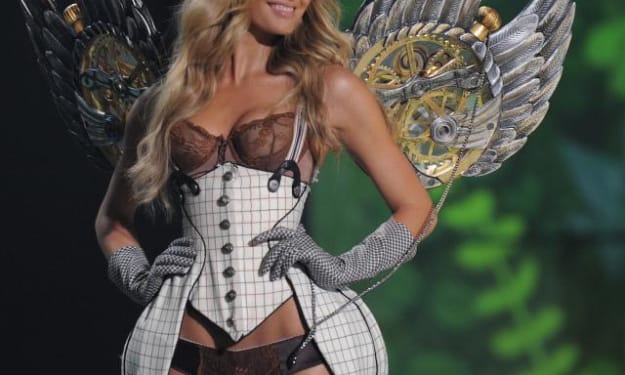
Meet Hugo Boss - the German fashion brand worn by celebrities. Celebrities like Emma Roberts, Gwyneth Paltrow, Fergie, and Edward Norton. In 2021, Chris Hemsworth became its latest ambassador.
From its humble beginnings in 1923, Hugo Boss has come a long way to become the recognizable fashion house it is today. However, who was the real Hugo Boss? And what are the collections it prefers to remain buried in the past?
This is the story of the real Hugo Boss.
At its peak, Hugo Boss was hugely popular with affluent, fashion-conscious men. Men who loved its cardigans, polo shirts, and tailored suits, and its tailoring rapidly became Hugo Boss’s hallmark in the world of the affluent, discerning man.
On July 8th, 1885 in the city of Metzingen, Luise and Heinrich Boss welcomed the youngest of their five children. Their newborn was christened, Hugo Ferdinand Boss.
As was typical of the 1880’s infant mortality was high and sadly of his siblings - only little Hugo and his sister survived past infancy.
As a young boy, Hugo developed a keen interest in fashion and tailoring. His interest was likely peaked by his father, Heinrich. Heinrich (a lingerie and linen merchant) ran and owned a store in nearby Wurttemberg, south of Stuttgart.
As the sole surviving son, Hugo was expected to become the heir apparent to his father’s lingerie business.
However, for young Hugo, unbeknownst to his father, he harbored other ambitions for his future. Hugo longed to own and run his own company. And he had no desire to shadow the business his father had built.
The rise of national socialism in Germany during the 1920s was far removed from what we’d recognize as socialism today. In Hugo’s era, national socialism represented a totalitarian movement of far-right doctrines.
Though Hugo had no desire to become a politician, his politics leaned strongly toward the right of the political spectrum. As a result, Hugo’s beliefs would form the core of the choices he made throughout his life.
After serving in the German Imperial Army during the first world war, Hugo was devastated when Germany was defeated in 1918. Five years later, now a veteran of the Great War - he founded Hugo Boss AG in 1923.
In the year that followed, Hugo opened his first factory with two business associates. The factory was a hive of activity with a small team of seamstresses producing men’s garments and shirts.
In its infancy, the factory was far from a design house. Quite the contrary. While fashion houses like Christian Dior and Coco Chanel produced haute couture, Hugo’s factory (located in his hometown of Metzingen) produced utility workwear, designed specifically for the blue-collar class.
During the late 1920s, Hugo Boss AG was better known as a tailor, rather than a design house. Furthermore, the design flair and signature style that forms the brand today was not a defining factor in its early years.
Following the Wall Street crash of 1929, the resulting financial meltdown caused economic shockwaves across Western Europe.
With the trickle-down effect of the crash, and the impending 10-year depression in sight, millions of businesses - from Wisconsin to Berlin, fell into bankruptcy.
Hugo's Rise To Prosperity
For Hugo - he too became heavily in debt. As a result in 1931, factory production was downsized to six sewing machines, while Hugo had little choice but to lay off a slew of his workforce in the process.
In the middle of his negotiations with creditors, Hugo’s political beliefs in National Socialism were about to pay off. For Hugo, the doors to a very lucrative opportunity were about to swing wide open.
This opportunity was built upon Hugo’s entry into the Nazi party. This opportunity allowed him to rub shoulders with rising politicians who were powerful, socially connected men. Men who could turn around his fortune.
Using his charm and guile, by 1938, Hugo had first dibs on contracts to produce uniforms for a portfolio of militarized units.
While urban legend names Hugo Boss as the designer of the SS and Hitler Youth uniforms, neither design involved Hugo’s penmanship.
Instead, his factory produced uniforms from a pre-designed template. A template that came courtesy of designers Walter Heck and Karl Diebitsch.
Furthermore, Hugo Boss AG was not the only factory that manufactured what was to become the most notorious, yet the most recognizable military uniform in modern history.
The truth of the matter is, although Hugo’s factory expanded and made its fortune during the rise of the Nazi party, he did not have the workforce to mass-produce every Waffen-SS uniform.
Nevertheless, it was the way that Hugo ran his company that would be called into question after the war. This was because Hugo’s fortunes were overturned at the expense of the innocent. Innocents who were desperate to survive.
A year into world war 2 (in 1940) 140 refugees of Hungarian and Polish descent, were assigned to manufacture military uniforms at Hugo’s behest. And, for a brief period, forty French prisoners of war were added to his labor force.
From the infamous brown shirts to the Waffen-SS, Hugo’s predominantly female labor force were enslaved under his command.
Sadly, for these laborers, the military wear would be adorned by the very same soldiers who slaughtered their sons, their daughters, and their nation.
By 1942 the financial turmoil of the early 1930s seemed but a distant memory. From the backs of his enslaved labor force, Hugo Boss AG reported an annual turnover of one million reichsmarks.
Given that one million reichsmarks equaled four hundred thousand dollars at the time, this was a princely sum for a relatively small operation.
All the while, Hugo continued to network his way through the Nazi party, making sure to join various factions and groups whose political slant followed the same far-right narrative.
In hindsight, 1942 was Hugo’s most prosperous year and as the war rolled on and his operation continued, profits trended downwards only due to commodity prices hikes.
Meanwhile, as the Third Reich grew stronger, the demand for more uniforms did not diminish. Therefore, in spite of the rise in operational costs, Hugo’s factory was profitable nevertheless.
As world war two raged on, Hugo made it so that his enslaved labor force were housed in makeshift camps situated around the company headquarters.
This arrangement lasted until 1943 when a dedicated camp was built to house the increasing numbers of forced labor in Hugo’s hometown of Metzingen.
To be clear, the camp was ostensively a prison. A prison with no chance of parole. The conditions in the camp were described as sanitary, with amenities kept to a bare minimum.
It's worth noting that this pleasant description of the camp should be taken with a grain of salt. After all, this was the prison guards' description of the prisoners’ living conditions...
They would say that, wouldn’t they?
1945 - The Aftermath of WW2
Fast forward to April 1945. As the war was drawing to a close, Hugo’s hometown was seized by allied troops.
Metzingen was designated a French occupation zone, meaning that the French now governed the city. With that, Hugo was taken into custody.
Classified as having strong ties to the now defeated Nazi party, Hugo underwent an allied forces psychological exercise known as denazification. Denazification was the process that allied forces used to psychologically erase the existence of Nazi ideology within German and Austrian society.
Denazification included but was not limited to the destruction of all nazi literature, the removal of the nazi party from the Reichstag - Germany’s parliament, the removal and detention of senior politicians within the Nazi party.
Denazification also enabled the allies to disenfranchise business owners who profited and held strong allegiances to the Nazi party.
For Hugo, as his relationship with the nazi’s was deeply intertwined, having joined the Nazi party in 1931. As a result, he was fined one hundred thousand reichsmarks by the Reutlingen Chamber of Commerce.
Shortly after, Hugo was stripped of his rights to run his company and stripped of his right to vote. And though he underwent the denazification program, it seemed that few believed that men like Hugo could simply erase their allegiances to national socialism.
It's fair to say that the allies were not as captivated by Hugo's charm. Nor did his charm sway their decision that his punishment would be punitive.
For Hugo, now classified by the allies as a Nazi activist, he was banned from running Hugo Boss AG and banned from owning a business of any kind.
As a result, the years that followed were understandably difficult for Hugo. Hampered by the stigma of the war, his ties to the nazi party, and his fine from the Chamber of Commerce, Hugo’s health began to decline.
The ownership and management of Hugo Boss AG was taken over by Hugo's son-in-law - Eugen Holy when Hugo died in August 1948 at the age of 63.
The house of Hugo Boss remained under family ownership 20 years’ after Hugo’s death.
When he retired in 1969, Eugen Holy passed the business to his sons Uwe and Jochen.
Under Uwe and Jochen’s leadership during the 1970s and 80s, the brothers created the signature BOSS menswear collection. Under the BOSS label, fragrances and sunglasses followed shortly afterward, rendering Hugo Boss an international design house.
If you were to visit the Hugo Boss website today, the origin story of Hugo Ferdinand Boss is omitted.
And while in recent years Hugo Boss - the company - has acknowledged and apologized for its involvement in forced labor during world war two, it seems that they are keen to erase the history of the man who originated the brand.
Author: Ella Graysun
About the Creator
Eleanor Graysun
Former technical writer. Now reigniting my love affair with creative writing.
Enjoyed the story? Support the Creator.
Subscribe for free to receive all their stories in your feed. You could also pledge your support or give them a one-off tip, letting them know you appreciate their work.






Comments
There are no comments for this story
Be the first to respond and start the conversation.